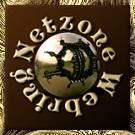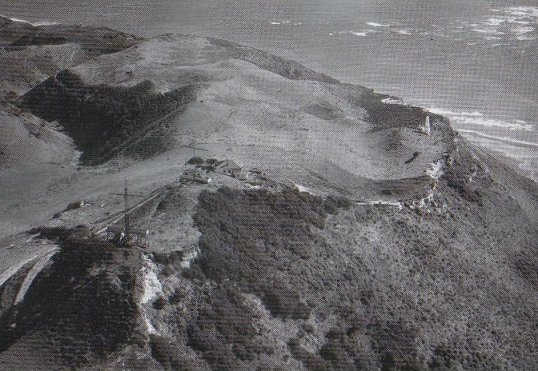![]()
Coasts
Rivers/Lakes
Lowlands/Plains
Geysers/Mud
Glaciers
Mt. Ruapehu
Mt. Cook
White Island
A Maori Legend
![]()
Abbotsford
Aramoana
Ballantynes
Brynderwyns
Cave Creek
Hawkes Bay
H.M.S. Orpheus
Influenza
Mt. Erebus
Mt. Tarawera
Rainbow Warrior
Seacliff Hospital
Tangiwai
Wahine
![]()
Annie Aves
Ata-hoe
Daisy Basham
Jean Batten
Minnie Dean
Mabel Howard
Margaret Mahy
Kath Mansfield
Kate Sheppard
Kiri Te Kanawa
Catherine Tizard
Murray Ball
Charles Goldie
Edmund Hillary
Richard Pearse
Lord Rutherford
Charles Upham
![]()
NZ FAQ--Funny
NZ Links
Credits
February 7th, 1863. The H.M.S. Orpheus approached the Manukau Heads carrying 259 men, many of them British soldiers involved in fighting the Maori wars in the Waikato. Little did any of these men, who had an average age of 22, with some being as young as 13, realise that they would go down in New Zealand history for being involved in our worst ever shipping disaster. These waters were known to be treacherous and Frederick Butler, an experienced sailor of many years, had a great deal of respect for them -- and knew them well. He stood looking over the railing watching the ship cut through the water. Also watching -- with his feet on Terra Firma was Edward Wing the 21-year-old in charge of running the signal station in his father's absence.
Edward Wing was not a fully qualified signalman, but he had learned well from his father. Wing first spotted the Orpheus about 9 a.m. She was an interesting looking craft, a transitional ship using both steam and sail. Her engines drove her at a respectable speed for the day but she was designed so that when winds permitted, or where coal supplies were short, the telescoping funnel could be lowered and the hoisting screws raised, allowing her to continue under sail alone. The signalman judged that the bar was safe to cross as it was covered by 10 metres of water and the tide was right on this clear sunny day. He signalled, "Take the bar", but became alarmed when she struck a course to the south of that required. He again signalled to the vessel instructing her to keep to northward, this signal was ignored. Wing then waited until the Orpheus was about three miles from the shore. He signalled, "Keep the vessel off the shore." Meanwhile, onboard the ship, Frederick Butler was also alarmed. As the Orpheus made her entrance he reported to his first lieutenant that the ship was, "going wrong." This was ignored. Butler had crossed the bar twice in previous months and on neither occasion had this course been steered. He voiced his concerns to his shipmates who encouraged him to go over the lieutenant's head and approach the master. This was a bold step and Butler would have some rough sailings ahead as a result, still he decided it had to be done.
Looking out over the Manukau Heads. A sandbar can be seen towards the right. Butler pointed out where the correct marks were and how off-course the ship was. Immediately the helmsman was ordered to turn the Orpheus to starboard. But she struck hard burying her nose into the sandbank. Examination showed the captain had been carefully following old charts. Since they were published the bar had shifted more than 800 metres out into the channel. Attempts were made to reverse the Orpheus off the bar, however her engines seized. The launching of a cutter was then ordered and this set off for the mainland. A second boat followed to render assistance if it was needed. Shortly after, the launch -- with forty-two men on board -- went to lay out the anchors, the thought being that this would allow the ship to be pulled toward calmer waters. The little boat was swept up against the bows of the Orpheus where it broke up. Most of those on board were either drowned or crushed to death. Only twelve hours after grounding 185 lives had been lost. Scores of lives could have been saved if either Edward Wing or his father had've realised the Orpheus had run aground. The ship was already well in distress by 2.30 p.m., it wasn't until 3.30 p.m. that anyone noticed that she was in trouble and rolling heavily to windward. The wind had risen and it took until 5 p.m. to get near the distressed ship. By this time dozens of lives had already been lost and the Orpheus had slipped further and further onto her side. When the Wonga Wonga arrived to help, small craft were sent out and those men who were still alive were pulled from the water.
Most of the crew and soldiers had taken to the rigging and from there the bowsprit was the only safe point from which to jump. Few men could get to that point on the rigging because waves were breaking over the ship at half-mast high. Of those that risked jumping from the masts many fell to their deaths on the deck. Once night fell little more could be done and the small boats returned to the Wonga Wonga where they were out of danger. It was a horrible night and the Orpheus lurched violently. Men clutched hold of the rigging and masts. At 8.30 p.m. loud cries were heard and the main mast seen to disappear into the raging waters. That was followed fifteen minutes later by both the fore and mizzen masts. At this time the small boats set out in the dark trying desperately to find men from their cries. They returned with a number of half-drowned men but most could not be found or were dead when they were. At daybreak some pieces of deck and the stumps of the masts were all that remained. Only 71 men survived the tragedy. The majority of the 50 bodies washed up on the beach were interred where they lay. the rest were never recovered. The day after the wreck the Commodore's bed was found washed up on the shore; it was fully made and looked ready for an occupant to climb in. Wreckage drifted ashore for some time afterwards. Seventeen years later the body of the ship's Master washed up; he was fully clothed, coat still buttoned. Twenty-seven years after that fateful night a part of the hull was washed up on the beach at Manukau Heads. It was 66 feet long -- the ship had been 252 feet long -- and souvenir hunters chopped sections of it up to recover the copper bolts. That was halted when the wreckage was covered again by a sandbank. Three years after the Orpheus went down the Wonga Wonga, the ship responsible for saving many lives, was also totally wrecked. She was at Greymouth and crossing the bar into the Grey River when a strong current caught her and tossed her onto shore. There was no loss of life. A small steamer, the Halcyon, is said to have been built out of timber from the Orpheus.
|




